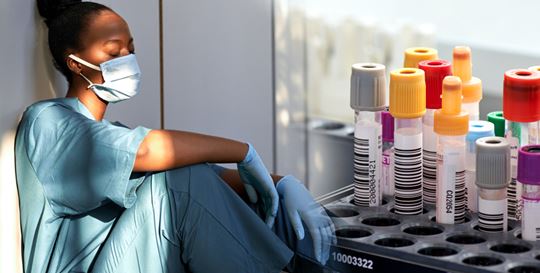About 1% of people who get COVID-19 die. A collation of publications and clinical data indicates that cytokine storms in severe patients is an important cause of death1. An individual with Cytokine Storm Syndrome (CSS) or Cytokine Release Syndrome (CRS) experiences a massive outpouring of inflammatory cytokines such as IL-6 in response to an inflammatory stimulus. CSS is an overwhelming and potentially life-threatening inflammatory response often seen in oncology care and may also be triggered by an infection or develop following infusion of agents targeting the immune system2.
The Connection Between CSS and IL-6
Studies indicate that Interleukin 6 (IL-6) appears to hold a key role in the CSS pathophysiology and may contribute to many of the key symptoms of CSS, for example:
- Via trans-signaling IL-6 leads to characteristic symptoms of severe CRS, (i.e. vascular leakage, and activation of the complement and coagulation cascade inducing disseminated intravascular coagulation (DIC))
- IL-6 likely contributes to cardiomyopathy that is often observed in patients with CRS by promoting myocardial dysfunction3
The Connection Between CSS and COVID-19
Acute respiratory distress syndrome (ARDS) and multiorgan dysfunction are among the leading causes of death in critically ill patients with COVID-194. And elevated interleukin-6 (IL-6) is a hallmark inflammatory signature seen in serum of patients with severe COVID-19 acute respiratory distress5. CSS may occur in patients with bacterial and viral infection and has become increasingly recognized in COVID-19 and affects lungs, leading to acute respiratory distress syndrome, the major cause of death in COVID-19 patients6.Studies highlight Steroid Treatment for COVID-19 Patients
Interleukin (IL) inhibitors may ameliorate severe damage to lung tissue caused by cytokine release in patients with serious COVID-19 infections. Several studies have indicated a “cytokine storm” with release of IL-6, IL-1, IL-12, and IL-18, along with tumor necrosis factor alpha (TNFα) and other inflammatory mediators. The increased pulmonary inflammatory response may result in decreased alveolar-capillary gas exchange, making oxygenation difficult in patients with severe illness7.
In a study conducted in the UK, over 2,104 patients received dexamethasone treatment for a period of ten days and were compared to 4,321 patients who received standard of care. The data showed that with standard of car, 28-day mortality was highest amongst those required ventilation (41%). Initial results demonstrate that dexamethasone reduced deaths by one-third in patients on ventilation8.
According to Randy Cron, a professor of pediatrics and medicine at the University of Alabama at Birmingham, corticosteroids are likely to be the way to help the planet deal with COVID-19 as there are many case studies that indicate immunomodulators such as inhibitors of IL-1 and IL-6 are saving the lives of people with COVID-199.
Discover more about Beckman Coulter’s Access IL-6, a fully automated assay for the quantification of IL-6, a cytokine that plays a key role in the mediation of inflammatory and immune responses initiated by infection.

 English
English





